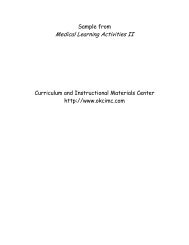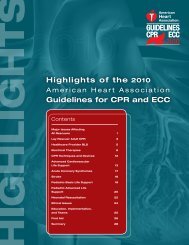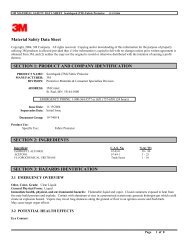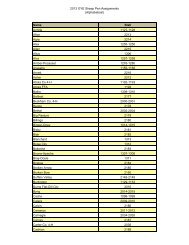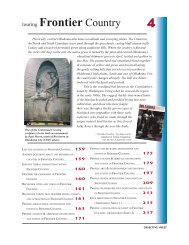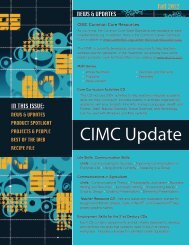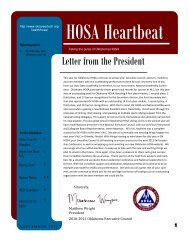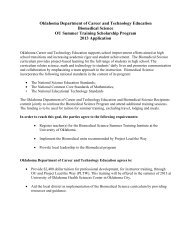Animal Nutrition and Digestion (PDF file, 5.95 MB)
Animal Nutrition and Digestion (PDF file, 5.95 MB)
Animal Nutrition and Digestion (PDF file, 5.95 MB)
Create successful ePaper yourself
Turn your PDF publications into a flip-book with our unique Google optimized e-Paper software.
Agriscience Principles <strong>and</strong> Applications<br />
s<br />
Feed Additives<br />
Agricultural producers must be efficient <strong>and</strong><br />
produce a marketable product while maintaining<br />
costs. One method agricultural producers use<br />
to help them achieve these goals is the use of<br />
feed additives. Feed additives are added to an<br />
animal’s feed for growth acceleration, increased<br />
feed efficiency, increased production of animal<br />
products, or health maintenance improvement.<br />
Feed additives are not usually considered a nutrient<br />
source.<br />
Two major categories of feed additives are growth<br />
regulators <strong>and</strong> antibiotics. Growth regulators<br />
are hormones that increase growth rates <strong>and</strong> feed<br />
efficiency. Antibiotics are used as a feed additive<br />
for the prevention <strong>and</strong> treatment of diseases <strong>and</strong><br />
infections such as scours, coccidiosis, <strong>and</strong> foot rot.<br />
Antibiotics may be used at low levels to improve<br />
efficiency <strong>and</strong> growth.<br />
Feed additives are also used for other purposes.<br />
Anthelmintics, also known as dewormers, are<br />
used to control various types of worms. Other uses<br />
of feed additives include bloat control in ruminant<br />
animals, stress reduction by adding tranquilizers,<br />
pH level regulation, <strong>and</strong> fly control.<br />
Feed additives are regulated by the Food <strong>and</strong> Drug<br />
Administration (FDA) if they are medicated or<br />
by the Environmental Protection Agency (EPA) if<br />
they are pesticides. Feed additives only should be<br />
used according to label directions. Both the FDA<br />
<strong>and</strong> EPA are federal regulatory agencies.<br />
Controversy surrounds the use of feed additives,<br />
<strong>and</strong> there is consumer concern about feed additives<br />
remaining in consumer products. In some cases,<br />
the feed additives are removed before the animals<br />
are marketed. Some agricultural producers market<br />
their products as not containing any feed additives.<br />
“Which is better to feed cattle? Grass hay or alfalfa hay?”<br />
The answer is, “It depends.” Cattle that eat alfalfa should gain more<br />
weight than ones that consume grass. Also, cattle will usually find<br />
alfalfa more palatable than grass hay. However, alfalfa hay will almost<br />
always contain more crude protein than grass hay. Thus, if you feed<br />
alfalfa exclusively to mature cows, you could theoretically feed them<br />
too much protein. Alfalfa is higher in digestible energy than is grass<br />
hay, but the fiber of grass hay is more digestible than is the fiber of<br />
most legumes. Good quality grass hay is usually much less expensive<br />
than good quality alfalfa hay. Therefore, if feeding young calves or<br />
mature beef cows that are in good body condition <strong>and</strong> don’t need<br />
the additional protein, grass hay will not only be more cost effective,<br />
it should provide adequate nutrition.<br />
11



